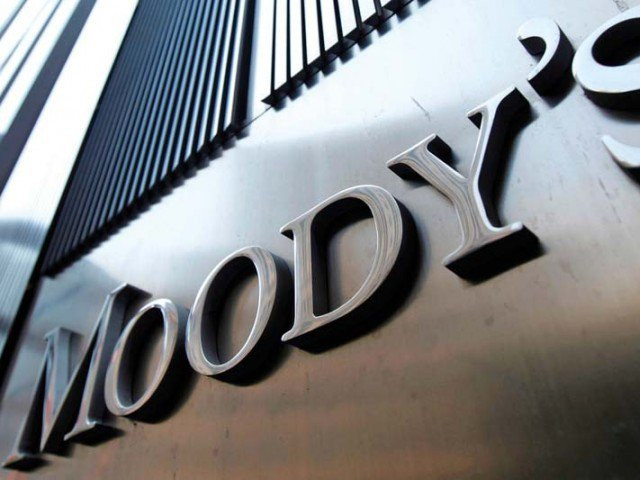
“Our outlook for Pakistan’s banking system is negative,” Moody’s Investors Service said in a research publication on Monday. “A slowing economy and high exposure to sovereign debt drive our negative outlook.”
The outlook expressed the agency’s expectation of how bank creditworthiness would evolve in the system over the next 12 to 18 months, it said.
The viewpoint sparked panic selling in banking stocks at the Pakistan Stock Exchange (PSX) on Monday. “As Moody’s changed Pakistan’s banking system outlook to negative, commercial banks remained the worst performing sector erasing 187 points,” Topline Securities stated in a report after the market’s closure.
PSX’s benchmark KSE 100-share Index lost 560.82 points, or 1.37%, and ended trading at 40,326.53 points.
The US-based rating agency pointed out that Pakistan’s gross domestic product (GDP) growth would slow down to 4.3% in fiscal year 2019 - compared to a 13-year high of 5.8% in the previous fiscal year - due to tightening domestic monetary conditions, “as evidenced by a 30% rupee depreciation, sharp interest rate increases (4.5 percentage points to 10.25% at present) and rising inflation.”
It said the key drivers to its negative outlook included deterioration in the operating environment, asset risk and government support.
It elaborated that the operating environment had deteriorated due to a slowdown in economic activity on the back of tightening domestic monetary conditions. The asset risk has worsened due to high exposure to government bonds, which links banks’ creditworthiness with that of the sovereign. And deteriorating economic conditions will increase the risk of NPL (non-performing loan) formation.
“Efforts to address structural/legal obstacles and improve risk management will only partly mitigate this negative impact,” it said.
“Large holdings of government bonds and loans to public-sector entities weigh on the banks’ credit profiles,” it added. “Specifically, Pakistan’s (long-term sovereign credit rating) B3 negative outlook suggests a decreasing creditworthiness, given heightened external vulnerability risks as ongoing balance of payments pressures erode foreign exchange buffers.”
Foreign debt, declining reserves pose major challenges: Moody’s
It maintained that the Pakistan government remained committed to supporting systemically important banks, but its capacity to do so had weakened. Accordingly, the development has deteriorated government support towards the banks.
“We expect a slight improvement in (banks’) profits for 2019, primarily driven by higher interest rates and government yields, which will support net interest margins.
“Profitability to recover slightly, but remains below historical levels,” it said. “We expect private-sector lending growth of 10-12% in 2019, despite a 5-5.4% fiscal deficit, partly financed by banks.”
What could change outlook?
“Improvements in the operating environment and in the sovereign’s credit risk profile are prerequisites to restoring a stable outlook,” it said.
To change the outlook to positive, meaningful and sustainable improvements in operating conditions, including structural reforms, competitiveness gains and robust foreign investment, would support business opportunities for banks.
Moody’s terms IMF bailout crucial for Pakistan
Besides, banks would need to strengthen capital and reduce non-performing loans, while maintaining their strong funding and liquidity profiles, it said.
Robust growth potential
“Pakistan’s longer-term growth potential remains strong, despite current pressures and downside risks,” Moody’s said.
Infrastructure investment and significant increases in power supply, partly financed by China’s China-Pakistan Economic Corridor (CPEC) project worth over $50 billion, will address some longstanding economic constraints.
Improvements in national security have also filtered through into stronger business confidence. “For instance, automakers Hyundai Motors, Kia and Renault SA are planning investments in Pakistan’s automobile industry,” it said.
A new government was installed in July last year in what was the country’s second consecutive peaceful political transition between civilian governments. “The new government plans institutional reforms, which, if effectively implemented, will bolster institutional strength,” it said.
Higher inflows of remittances, driven by economic recovery in Gulf countries, would also support private spending, it said.
Published in The Express Tribune, February 12th, 2019.
Like Business on Facebook, follow @TribuneBiz on Twitter to stay informed and join in the conversation.


















COMMENTS
Comments are moderated and generally will be posted if they are on-topic and not abusive.
For more information, please see our Comments FAQ